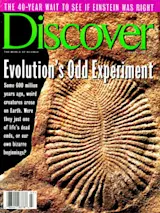In late 1959 Leonard Schiff, then a professor of physics at Stanford, noticed a magazine ad for a new kind of gyroscope. The ad prompted a discussion with his colleague William Fairbank, an aficionado of low-temperature physics, who asked what he would do with a perfect gyroscope, should such a device ever be constructed.
Schiff’s answer was just what Fairbank had in mind himself: Use it to test Einstein’s general theory of relativity. In particular, test one of the theory’s more remarkable predictions--that a rotating body in space would pull the very essence of space-time around with it. The effect, known as frame-dragging, would be small enough to serve as a pedagogical illustration of the word infinitesimal, but it should exist. And it would take a close to perfect gyroscope to observe it.
In 1960, Fairbank, Schiff, and Robert Cannon, a Stanford engineer, took this idea and initiated the Stanford ...














